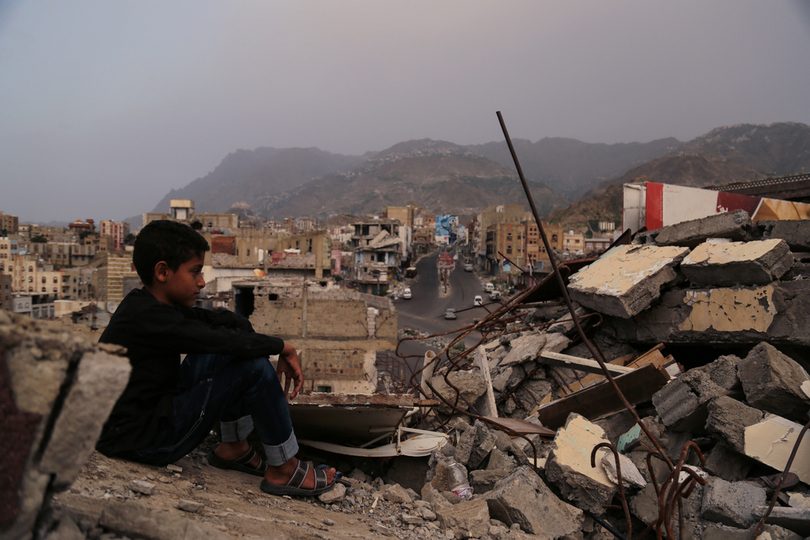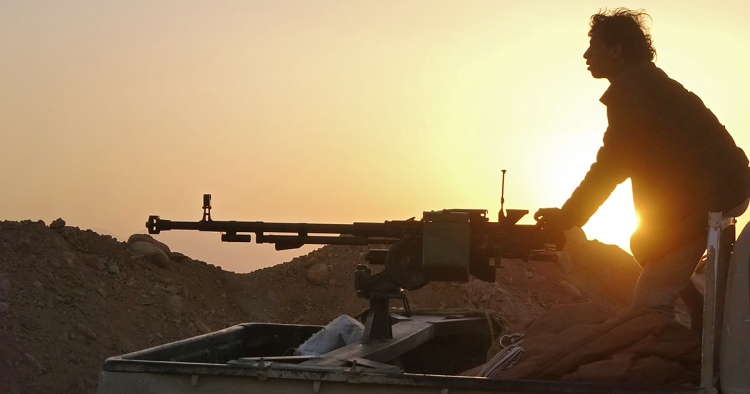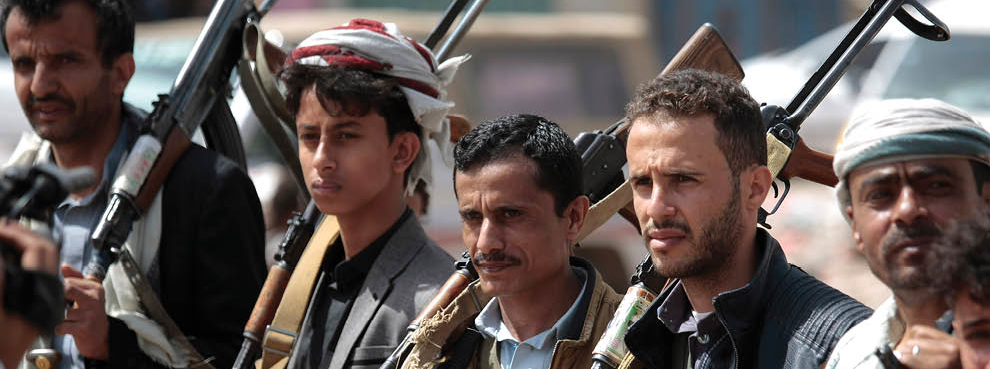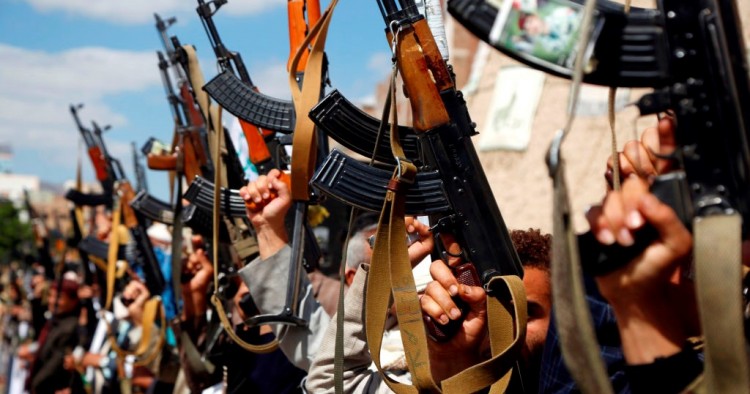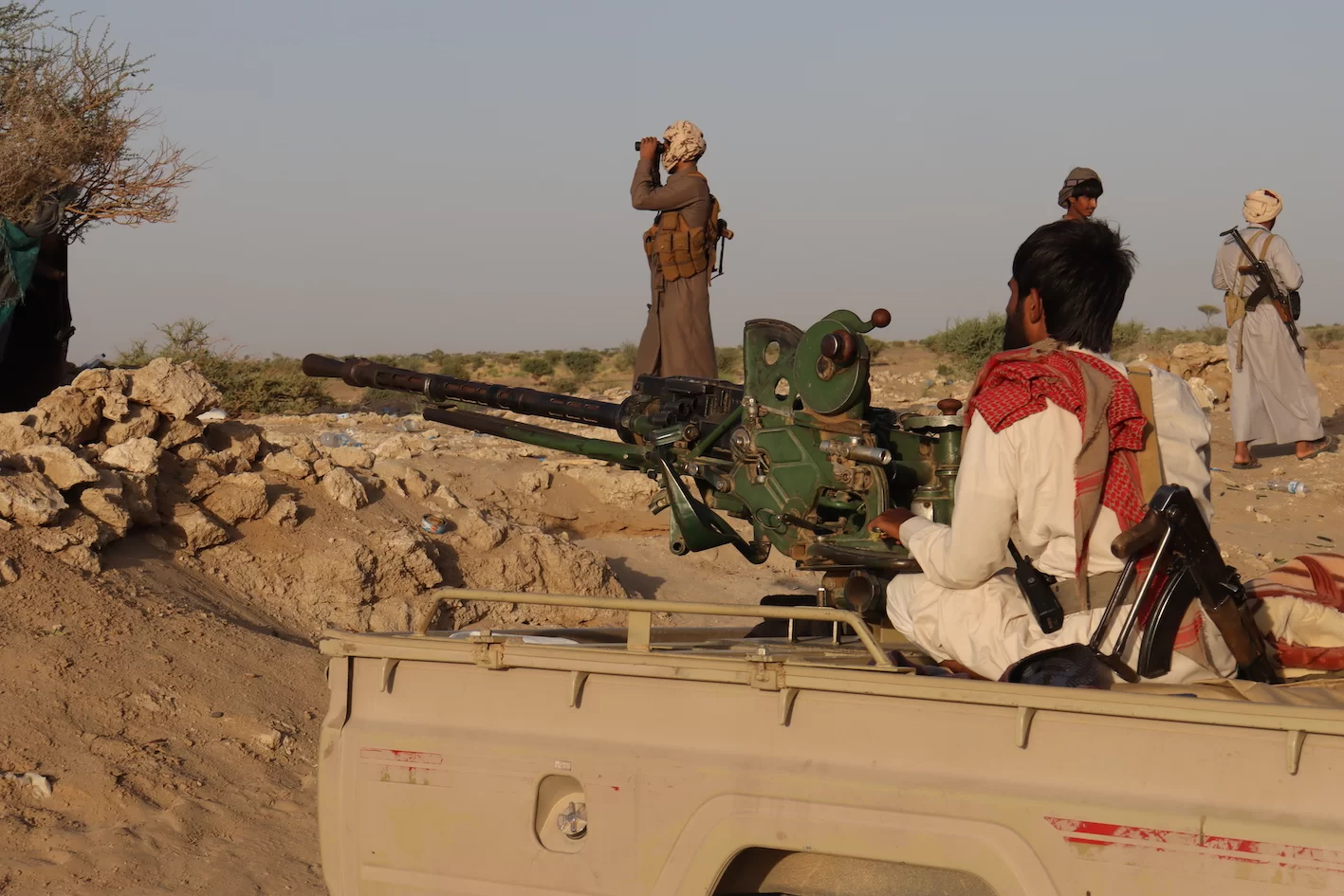his is an excerpt from Remote Warfare: Interdisciplinary Perspectives. Get your free download from E-International Relations.
To governments, remote warfare is seen as an alternative way to militarily engage that is effective, cheap, and ‘exceptionally precise and surgical,’ with a smaller footprint and lower risk to the intervening party’s troops (The White House 2013; BBC News 2012; Vitkovskaya 2012; Currier and Maass 2015). It has been argued that it facilitates the killing of ‘bad guys’ and ‘do[es] not put…innocent men, women and children in danger’ (Brennan from 2011 quoted in Purkiss and Serle 2017). These assertions, primarily made by the parties waging remote warfare, are wrong. Remote warfare shifts the burdens of warfare onto civilian populations (see Woods 2011; Purkiss and Serle 2017; Reprieve 2016, 2017, 2018; Amnesty International 2019; the Bureau on Investigative Journalism 2019; North Rhine-Westphalia Higher Administrative Court 2019). The impacts of this are evident in the case of Yemen.
The extent of civilian harm caused by drones and special forces raids in Yemen is underreported. Moreover, the reporting that has occurred has been centred mostly around civilian casualty numbers. There are significant discrepancies between the rates acknowledged by the US – criticised for its limited and superficial investigations – and those reported by NGOs, such as Amnesty International or the Bureau of Investigative Journalism.[1] The numbers of civilian casualties reported by NGOs, journalists, local populations and activists are substantially higher than those acknowledged by the US Government (North Rhine–Westphalia Higher Administrative Court 2019; the Bureau of Investigative Journalism). In 2016, the legal charity Reprieve wrote ‘the [civilian casualty] figures proposed by the US Government have been inconsistent, improbable and without even a minimal effort to provide evidentiary proof.’[2] One reason for this discrepancy is the lack of comprehensive post-strike investigations, including disregard for the findings of on the ground investigations conducted by local activists, NGOs and journalists (the Bureau of Investigative Journalism 2019; Currier and Maass 2015; Evans and Spencer 2017; Reprieve 2016). The US has not publicly addressed accounts of civilian harm beyond casualties.
Though an important endeavour, thorough monitoring of civilian casualty numbers does not capture the whole picture of civilian harm. Remote warfare operations also have significant economic, educational and mental health implications for impacted communities. Understanding these impacts of remote military operations on civilian populations is a crucial step toward evaluating the legality, legitimacy, morality and strategic significance of remote warfare.
For nearly two decades, the voices of Yemeni survivors and victims of remote warfare have been excluded from international and policy discussions on remote warfare. Drawing upon interviews with Yemenis, this chapter highlights the significant harm experienced by local populations in Yemen caused by two aspects of remote warfare: drones and special forces operations. After providing a brief background to the situation in Yemen, the first part of the chapter sets out two Navy SEAL raids as experienced by the survivors. Thereafter, the human impact of living below drones in Yemen will be examined based on interviews with 49 individuals, the majority of them from Marib. The chapter argues that the methods of harm measurement, specifically through casualty statistics only, are insufficient. Harm must also be measured in terms of the socio-economic, educational and mental health effects on local populations.
Background
Yemen has been the poorest country in the Middle East and North Africa region for some time. Today, the UN describes Yemen as ‘the worst humanitarian crisis in the world,’ with an estimated 80 per cent of the population – some 24 million people – at risk, and therein 14.3 million in acute need (World Bank 2019). The country is currently host to two conflicts. The civil war, which started as a conflict between the Yemeni Government and the Houthi rebels is the most widely covered – it has since developed into numerous and changing conflicts within the larger context of the civil war. A nine-state coalition largely comprised of, and led by, Saudi Arabia and the United Arab Emirates has intervened militarily to assist the Government at its request. The two Gulf states both heavily rely on US weapons and military equipment.
The second conflict is part of the covert and legally dubious US-led ‘War on Terror.’ Indeed, on the legal aspects of this conflict, a ground-breaking ruling by a German Higher Administrative Court in March 2019 found at least part of the programme of targeted killing by drone in Yemen unlawful (North Rhine–Westphalia Higher Administrative Court 2019; Reprieve 2019). Since 2002, Yemen has been a significant theatre for remote warfare, with the US use of drones the most widespread method for exercising lethal force (the Bureau of Investigative Journalism 2019; Evans and Spencer 2017). But it has also involved the use of special forces (Peron and Dias 2018).These counterterrorism efforts are separate to the ongoing civil war and American support to the Saudi-led coalition. However, it is noteworthy that the Emirate’s presence in Yemen has enabled it to silently assist the US War on Terror and provided US actions with increased cover, concealed by the fog of the civil war. The counterterrorism operations preceded, and will in all likelihood outlive, the civil war. The research herein pertains to the human cost of two methods of remote warfare, namely the use of drones and special forces, as part of the US-led ‘war on terrorism’.
Our Research
The analysis in the chapter is based primarily on interviews and conversations with a total of 49 people. Camilla Molyneux, a research consultant at the All-Party Parliamentary Group on Drones, spoke to people through semi-structured group conversations over the course of a week in Marib, Yemen in July 2018. Baraa Shiban, Case Worker at Reprieve and a youth delegate to Yemen’s National Dialogue, conducted another nine phone interviews with individuals based in Bayda, Marib and Sana’a in Yemen, Amman in Jordan, and Cairo in Egypt[3] throughout 2018 and 2019. Molyneux and Shiban are both in frequent communication with the individuals interviewed.
For this chapter, survivors, victims and their families, witnesses and activists were interviewed. In order to provide a representative view of the human cost of remote warfare by drone and special forces, the authors took care to talk to women, children and men of different ages, geographies, socio-economic status and occupations. The final section of the chapter is largely dedicated to the experiences of women. This is particularly important because existing research on the human cost of drones, due to geographical or cultural barriers, is largely based on interviews with men.
Ahead of the interviews in Marib, Molyneux consulted with a mental health expert on trauma and conflict. This informed the interview style and questions posed. It also provided several useful techniques that could be utilised in the event of an interviewee feeling anxious or experiencing flashbacks.
Finally, due to the sensitivity of this issue and fear of reprisals by the US, its allies or al-Qaeda, some names have been anonymised to protect interviewees safety. Anonymised names are marked with an asterix (*).
The Adhlan and Yakla Special Forces Ground Raids and Their Impacts
The Raid on Yakla
On 29 January 2017, some 50 soldiers from Navy SEAL Team Six, accompanied by military dogs, carried out a raid on a small village in Yakla, Baidhaa province.[4] The aim was to capture or kill Qassim al-Rimi, the leader of al-Qaeda in the Arabian Peninsula (AQAP) (Craig 2017a). Yakla would become the second of two unsuccessful raids in the hunt for al-Rimi, that in total killed at least 66 civilians, including 31 children (Michael and Al-Zikry 2018; Reprieve 2017). The survivors of the Yakla raid refer to it as ‘the night that forever changed our lives’ (A. Al-Ameri and S. Al-Ameri 2019). They have further opined that ‘We can never view the US the same way as we did in the past’ (Ibid.).
Under the cover of a moonless sky, the SEALs approached the village without detection. Reaching the village, the SEALs lost their cover, and a two-hour-long gunfight erupted between the SEALs and tribesmen. As gunships bombarded the village, residents recall having heard the distinct buzzing sound of a drone, firing three missiles and hitting a medical unit, a school and a mosque.
The operation had been authorised by President Trump five days prior during a dinner (McFadden et al. 2017), rather than in the Situation Room which is regular procedure (Buncomb and Sharman 2017). The raid was executed less than a week into the Trump Administration, with Secretary of Defence James Mattis describing the operation as a ‘game changer’ in the campaign against AQAP (Ibid.). Within two weeks, Stephen Seche, former US Ambassador to Yemen, said the outcome ‘turned out to be as bad as one can imagine it being’ (Shabibi 2017). Ten children and eight women were killed, with another seven injured (Emmons 2018). Until this day, the survivors remain adamant that none of the killed villagers were AQAP members (A. Al-Ameri, A. and S. Al-Ameri 2019). Among the victims was three-month-old Asma Al-Ameri, and a heavily pregnant woman who was fatally shot in the stomach, giving birth to a baby that later died (Al-Jawfy 2017).
A widespread backlash against the US’ Yemen policy followed, extending well beyond Yakla (Sanger and Schmitt 2017). This included condemnations of the raid by government officials and calls for a temporary stop to all intelligence sharing with the US (Schmitt 2017). Yemen’s Foreign Minister Abdulmalik Al-Mekhlafi publicly characterised the raid as ‘extrajudicial killing’ (Ibid.).
Eleven-year-old Ahmed Al-Dahab was the first of many victims. Hearing something in the distance, the boy climbed onto the roof of the house. Unable to see anything, he called out ‘who is there?’ (A. Al-Ameri and S. Al-Ameri 2019). The question was answered by a flurry of gunshots that killed the boy. Ahmed’s father, Sheikh Abdulraoof, and uncle, Sultan, met the soldiers with gunfire and were later found dead on their doorstep. An 80-year-old tribal elder, Saif Al-Jawfy, as well as eight-year-old Nawar Al-Awlaki and her mother, who was hiding inside the house with other women and children, were also killed (Ibid.).
SEAL Team Six then stormed a nearby house, according to villagers shooting indiscriminately (A. Al-Ameri and S. Al-Ameri 2019; Al-Jawfy 2017). Three children, four-year-old Aisha, five-year-old Hussein and seven-year-old Khadijah, and their father Mohammed, were all killed in this one home alone (Ibid.). Running toward his son and grandchildren’s house, Abdullah Mabkhoot Al-Ameri, who survived a drone strike on his wedding day three years earlier, was shot dead in his pyjamas (Ibid.).
Witnesses said that anyone attempting to flee their homes were subject to the soldiers’ fire (Ibid.). Abdullah Al-Ameri’s daughter, 25-year-old Fatima, was shot and died instantaneously, whilst Fatim Al-Ameri, mother of seven, was shot in the back as she attempted to escape the soldiers, carrying her two-year-old son (Ibid.). The next morning, the boy was found alive, asleep in his dead mother’s arms (Ibid.).
Amid the gunfire, a helicopter fired a missile into a third home, killing five-year-old Halima Al-Ameri (Ibid.). Yet another missile caused a roof to collapse, taking the life of three-month-old Asma Fahad Al-Ameri while she was asleep in her cot (Ibid.). Two more children, Mursil and six-year-old Khalid Al-Ameri, were killed by gunfire as they tried to escape their home (Ibid.).
In total, 23 civilians, two militants and one American soldier were killed that night (Evans and Spencer 2017). Another three US soldiers were injured when an aircraft crashed on landing – later referred to by the Pentagon as a ‘hard landing’ – ahead of the operation (Ibid.; McFadden et al. 2017). Upon their departure, the soldiers destroyed the aircraft to prevent it from falling into ‘enemy hands.’ The soldiers left behind injured and grieving survivors, destroyed homes and 120 dead sheep and goats. According to villagers this livestock which the village depended heavily on, was killed by excessive Navy SEAL fire, aimed at anything that moved. (M. Al-Ameri 2017; A. Al-Ameri 2019; Reprieve 2017).
The Raid on Adhlan
Despite the unsuccessful raid only two months prior, a raid on Adhlan was conducted on 23 May 2017. According to a statement by Central Command, the aim was to gather electronic equipment, including cell phones and laptops, to gain ‘insight into AQAP’s disposition, capabilities and intentions’ (quoted in Craig 2017b).
The following section is based entirely on conversations with more than a dozen members of the Adhal family in Marib in July 2018 (Adhal 2018).
It was 1 am, Tuesday morning, and the Adhal family were fast asleep in their house, perched on the slope of a sandy hill in the Maribi desert. The air inside was warm and thick. Othman, a nine-year-old boy, was struggling to sleep and had decided to try his luck outside.
Unbeknownst to sleeping residents, some fifty US Special Forces operatives had taken up position on the nearby hillsides. Shortly thereafter, the residents were ripped out of their sleep by barking dogs and shouting. Military aircrafts thundered across the sky and descended onto the village subjecting its homes to intense gunfire. Elite soldiers charged at the houses with automatic weapons in hand, and military dogs at their feet.
During our conversation, jida,[5] gazing into the distance, stated ‘the dogs were the worst.’ I don’t like to talk about it, it is re-traumatising,’ jida said. ‘Speaking the truth about what happened that night is the only way to get some semblance of justice’, a relative countered, ‘Raising awareness of the effects of drones and military raids is important,’ he continued. ‘If the US is held accountable, this may not happen to other families.’
In one hour, the family lost three of its members. Ahead of the aerial offensive, as the SEALs were quietly taking up position on the mountains surrounding the village, Nasser, a seventy-two-year-old man, was on his way to mosque. The partially blind man mistook the SEALs for visitors and was shot dead whilst approaching the newcomers to greet them. Directly following the shooting, close by villagers stepped out of their houses, seeking dialogue with the SEALs. As a result, five men were seriously injured and another four killed: Al-Ghader, Saleh, Yasser and Shebreen. Al-Ghader was a soldier in the Yemeni military, fighting the Houthis alongside the US-supported, Saudi-led coalition in the civil war.
The family explained how machine gun fire rained down on the village and pierced into homes, causing children and women to scatter into the night. Jida ran barefoot and in her pyjamas, down the hill on which her house was located, with her grandchildren in tow. Their bare feet dug into the heavy, cold sand. From a pursuing helicopter, machine gun fire danced around the children. Fifteen-year-old Abdullah was shot dead as he attempted to escape the violence.
‘It was hot,’ Othman remembers, describing why he was sleeping outside. The sound of the approaching helicopters and planes scared the nine-year-old. As he ran toward the house in search of his mother, an American soldier appeared. ‘I screamed,’ Othman says. He was shot twice and lost consciousness. The child, who loves football and is among the brightest students in his class, rolled up his sleeves and revealed the scarring from two gunshot wounds on his forearms. His eyes were wide; the pain from that night was painted across his face. An hour after the SEALs’ arrival, the shooting subsided. Othman, who had regained consciousness, found his mother weeping, cradling the dead bodies of his two older brothers.
The survivors struggle with a multitude of visible and invisible scars. Two of the Adhal brothers will live out the rest of their lives with disabilities; one had his left leg amputated at the knee, the other brother is in Cairo for treatment at a monthly cost exceeding the family’s yearly savings. An elder pulled out a picture of the young man in a hospital bed, connected to multiple life-saving machines. In the photo, bandages are tightly wrapped around his head, legs and arms. A woman, tears streaming down her face, witnessed her husband die in their bed, beside her. She was one of many survivors experiencing overwhelming, traumatic flashbacks at home. ‘The only room she’ll set foot in is the kitchen,’ a family member said quietly.
The raid has had a significant impact on the Adhal children’s mental health, causing them to suffer from insomnia, depression and anxiety. One boy, the family said, was near unrecognisable. Following his father’s death, the once outgoing child who loved school was silent, worried and refused to leave the house. ‘We have to force him to go to school’ the family commented. Following the raid, his little sister was forced to grow up fast. At only about 10 years old, she was already stepping in as a substitute adult. In a neighbouring house, a young boy lost his hearing. Only being able to communicate with his family through self-made hand gestures, the child has had to process his experiences alone.
There are visible signs of the raid everywhere. Walls are littered with bullet holes, all the windows have been replaced, and only a few meters from the home, a blown-up pickup sits on its head. ‘I hate this house’, jida said with tears running down her face. ‘Every evening I walk ten minutes into the desert to sleep under a tree. I cannot bear to sleep here anymore.’[6]
The Impact of Drones on Local Populations
US military operations in Yemen, including intelligence, surveillance and reconnaissance (ISR), are aimed at disrupting terrorist activities and preventing attacks by AQAP and the Islamic State in Yemen. Under President Obama, drones became a central counterterrorism tool. His Presidency marked a policy shift from Bush-era large-scale, boots-on-the-ground operations, extraordinary rendition and ‘personality’ strikes, to ‘signature’[7] strikes, with new deployments small in scale, often conducted by special forces or working through, with and by partners.
The following sections are primarily based on accounts collected from across Marib and will briefly outline the effects of the US drone programme on civilian communities in the province. As previous studies largely have relied on testimonies from men,[8] women and children are the primary focus herein.
The Buzzing Sound of Drones
The overwhelming impact caused by drones on civilian populations was a constant theme throughout the interviews. Responding to a frequently voiced statement in US and UK military and policy-making circles, namely that drones can neither be seen nor heard from the ground in Yemen, a young boy was adamant to counter this narrative, describing detailed visuals (Women 2 2018). NGOs and reporters – local or with partners on the ground – maintain that drones can be heard. The authors of this chapter have both heard drones in Yemen. In fact, this issue would have been laid to rest some time ago, if the voices of people with first-hand experience – the voices emphasised herein – were afforded the same legitimacy and audience as those dominating the international conversation on drones.
A man living elsewhere said that ‘the drones fly lower during the night, they are so loud it can be difficult to hear the TV!’ (Adhal 2018). Moreover, several families reported that under President Trump, the aircrafts fly at a lower altitude and with more frequency (Adhal 2018). What has caused this change of behaviour remains speculation; however, Trump’s relaxation of safeguards might be one explanation.[9]
Impacts on Mental Health
Every day, we kiss our loved ones goodbye, not knowing if we will ever see them again. It is like living in a constant nightmare from which we cannot wake up.
(Faisal bin Ali Jaber, 2015)
In March 2019, a German High Administrative Court found that drones have a significant impact on civilians living below them (North Rhine-Westphalia Higher Administrative Court 2019). This echoes reports from almost every individual interviewed, stating that frequent and unpredictable drone appearances caused widespread and constant fear, frustration and apathy (Abia* 2018; Badia* 2018; Cala* 2018; Adhal 2018). The inability to predict who, when or where a strike would hit, as well as the failure to keep their family safe, caused a lot of grievance, especially among heads of households (Ibid.; Women 1 2018; Women 2 2018). Noting the open-ended rhetoric surrounding counterterrorism drone operations in Yemen, many caretakers expressed immense frustration and anguish at not being able to provide a safe future for their children (Ibid.). Upon the loss of her son to a drone strike, one woman expressed the difficulty in providing for her grandchildren and coping with her own sorrow, ‘I cry for my son every day’ (Cala* 2018).
Responding to questions about their own experiences, mothers frequently reverted to the health of their children. Among the interviewees, it was commonly believed that the young population experienced the most severe mental health effects (Abia* 2018; Adhal 2018; Badia* 2018; Cala* 2018; Women 1 2018). The mothers reported that children living in proximity to drone- and air strikes have experienced significant mental health problems, including insomnia, depression, mood swings, anxiety, apathy and fear (Ibid.). Every time a drone is heard or seen, one mother explained, the whole village of 1900 people evacuate into the desert in their cars. They only return once the drone has left the area. This procedure is repeated without failure at every sighting or audio confirmation of a drone, on average two to four times a month. Abia*, a mother from Marib, (2018) said ‘When they [the children] hear the drones, they run home from school calling for their mothers, then everyone gets into their cars and evacuate the village.’ Abia* (2018) added that a number of the children would scream ‘the Americans are coming to kill us!’ Another woman described the rapidly deteriorating mental health of her son:
My son has attempted to commit suicide multiple times. He walks to a nearby busy road and lies down […] He says he wants to join his father [who died from a drone strike] in heaven.
(Baida*, a mother from Marib, 2015).
Pregnant women are another group frequently identified as particularly vulnerable, with numerous reports of women losing their unborn children (Al-Qadhi 2018; Sabaa 2018). One activist[10] reported that the blast wave caused a nearby woman to miscarry (Al-Qadhi 2018). Miscarriages, local women say, have been caused by physical injury from drone strikes and military raids and, they believe, immense psychological stress experienced during these operations (Ibid.; Sabaa 2018; Women 2 2018).
Accounts also described a link between the presence of drones, and people applying self-restrictions on their movements: ‘One day I was about to go outside, but my husband stopped me. He could hear the drone. I stayed inside all day,’Al-Qadi explained (2018).Similarly, a mother described how, following a drone strike only meters from her family’s tent in an informal camp for internally displaced people, she immediately imposed restrictions on her children’s movements, banning them from playing outside (Derifa* 2018). In areas with frequent drone presences, children are left without safe places to play. These accounts echo previous research from Pakistan and Afghanistan (Stanford University and NYU: 2013; Williams 2015). Researchers from Stanford University and NYU (2012, 55), for example, found
[T]hose interviewed stated that the fear of strikes undermines people’s sense of safety to such an extent that it has at times affected their willingness to engage in a wide variety of activities, including social gatherings, educational and economic opportunities, funerals and that fear has also undermined general community trust.
Impacts on Education
According to interviewees, the impacts of drones on education are linked to those on mental health (Abia* 2018; Adhal 2018; Badia* 2018; Cala* 2018). Through conversations with parents and children, it became clear that some children could access school, whereas others stayed at home due to the perceived or actual danger travelling in areas frequented by drones. One mother reported that she kept her children home as a means to protect them after a drone struck only meters from their tent in an unofficial IDP camp (Derifa* 2018). A group of mothers, most of them primary breadwinners after their husbands left to fight in the civil war, described how desperately they wanted their children to get an education and a better life (Women 1 2018; Women 2 2018). It was particularly important that their daughters go to school, so that if left in a position similar to their mothers, they would not have to resort to begging (Ibid.). For some families, a working child was of financial necessity, following the death by drone of a breadwinning family member. Nevertheless, the women feared that those who left school early would miss out on crucial education that might be essential to secure future employment. This was a significant worry as the pressure on the job market in Marib skyrocketed, following a population-increase from 40,000 to 2 million in only five years (Government of Marib 2018).
Impacts on Family Finances
Drone strikes have direct impacts on survivors, notwithstanding the obvious impacts caused by the loss of a loved one. In some instances, wives and even children, of deceased breadwinners are forced to work in order to compensate for lost income. In a society where women primarily conduct unpaid labour, and where paid work has only recently opened up to women (and is highly competitive), several of the interviewees said they resort to begging on the streets of Marib, or from their neighbours (Women 1 2018).
For the Al-Adhal family, the loss and injury of the family’s three primary breadwinners – two were left disabled and one killed – had a detrimental financial effect. The two surviving men have, due to their injuries, been discharged from their positions in the Yemeni national military without financial support. One lost his leg, and the other is receiving medical treatment in Cairo, Egypt. ‘The medical treatment is more than US$600 per month. Each month, we have about 25 Saudi Rial [the equivalent of US$6.7] to spare,’ said an elder (Al-Adhal 2018). The remaining US$593, the family have to borrow.
Property, including homes, vehicles, tools and livestock have been damaged or destroyed in air strikes and raids (A. Al-Ameri 2019; Sabaa 2018). In a country where the UN estimates that 80 percent of the population – 24.1 million people – are at risk of hunger and disease (World Bank 2019), the overwhelming majority of survivors cannot afford to rebuild or replace damaged property. As such, the damage caused by strikes has led some survivors to permanently lose important income, take on debt and/or go hungry (A. Al-Ameri 2019; Al-Adhal 2018; Al-Qadhi 2018). Some survivors are forced to continue living in damaged or makeshift homes that are constant reminders of their traumatic experiences (Al-Adhal 2018). As mentioned, in Yakla, the raid left homes and vehicles destroyed and livestock dead. Similarly, the Al-Adhal’s home remains riddled with bullets and, more than two years on, a missile-damaged pickup truck rests on its head in the sand only meters from the home.
Lack of Accountability and Failure to Investigate and Acknowledge Civilian Harm
Of the 329 US air strikes and counterterrorism operations conducted in Yemen, killing an estimated 207 to 325 civilians (the Bureau of Investigative Journalism 2019), not a single apology has been issued or compensation offered. A number of family members and survivors have reached out to the Central Command (CENTCOM), the US military Command overseeing activities in the Middle East and beyond, seeking an explanation or apology. An organisation that has assisted survivors with this correspondence says CENTCOM has never responded. A survivor from the Yakla raid said he ‘thought an investigation would be launched, and that we would receive an apology and compensation’ (S. Al-Ameri 2019). Instead, he described ‘the behaviour of the US was aggressive and unaccountable’ (Ibid.).
Survivors explain how the lack of recognition amounts to their lives and innocence – and those of their killed relatives – being disregarded. In a letter to Presidents Obama and Hadi (of Yemen), Faisal bin Ali Jaber (2019) wrote that ‘neither the current US or Yemeni administrations bother to distinguish between friend and foe.’ The lack of distinction was also raised by Zabnallah Saif Al-Ameri. The Yakla survivor, who lost nine members of his extended family, including five children, said:
It is true they were targeting al-Qaeda but why did they have to kill children and women and elderly people? If such slaughter happened in their country, there would be a lot of shouting about human rights. When our children are killed, they are quiet.
(Shabibi 2017)
Thoughts for the Future
Civilian Harm Extends Beyond Casualties
The voices elevated in this chapter show the importance of expanding our understanding of civilian harm beyond that of casualties only, to include all harm, whether it be indirect, physical and/or psychological. For example, the consistent psychological pressures of a seemingly imminent attack, which in turn, considerably lowers quality of life, was emphasised by a significant number of interviewees. The account of harm set out in this chapter requires further research. This must be understood by military and political decision makers and inform policy development and decision-making processes pertaining to the use of military force.
Informed Decision-Making Requires Complete Knowledge of all Effects of Military Operations
The lack of understanding of the comprehensive civilian harm caused by counterterrorism operations in Yemen is reflected in policy- and decision-making circles in Washington and across the capitals of US allies, where civilian accounts are unrepresented. This has significant unacknowledged consequences, some of which are highlighted in this chapter. Without complete knowledge of the effects of drone and special forces operations – including the human cost and the number of civilian casualties and injuries – the US is unable to make fully informed decisions about its counterterrorism operations. Crucially, full information must include the experience of ordinary people, women and children.
Civilian Harm is Bad for Strategy
The lack of understanding of, or ambivalence toward, all aspects of civilian harm can be counterproductive. Civilian harm is recognised by journalists, academics and military leaders to run counter to overall military strategic aims (Gul 2017; Jaffer 2016; BBC 2010; Petraeus and Kolenda 2016; Reprieve 2016; Stanford University and NYU 2012; Scahill 2016; Waldman 2018). Whereas protecting civilians has taken a more central role in conventional warfare,[11] it has not translated well to the battlefield of remote warfare, where militaries consistently fail to consider the relation between strategic effectiveness and extensive civilian harm. In a 2013 letter to President Obama and Yemen’s President Hadi, Faisal bin Ali Jaber wrote:
With respect, you cannot continue to behave as if innocent deaths like those in my family are irrelevant. If the Yemeni and American Presidents refuse to engage with overwhelming popular sentiment in Yemen, you will defeat your own counterterrorism aims.
(quoted in Kutty 2014)
Our research suggests links between civilian harm and strategic effectiveness may extend to remote warfare. Anecdotal evidence, such as children believing the ‘Americans are coming to kill us,’ or the belief that innocent deaths are treated as ‘irrelevant,’ suggest the US might be losing the human ground and requires further examination. Moreover, it calls for a re-evaluation of the current policy and research into more proportionate counterterrorism methods.
Local Populations as Allies
Local populations can, and should be, recognised as potential resources and allies. More research needs to be conducted into alternative, long-term and peace-focused ‘security’ partnerships. Marib would be a natural place to trial this. During our interviews, Maribis went to great lengths to vocalise their opposition to AQAP (Adhal 2018; Sho’lan 2019; Governor Al-Aradah 2019). Moreover, systematic efforts to counter terrorism at the provincial, tribal and grassroot level have been in practice since 2002.[12] More recently, communities have requested photographs of terrorists and hotlines to directly communicate with security forces:
If they provide us with pictures, we can let the government know when we see them (AQAP) […] This way the government can make sure other innocent people do not get hurt (Al-Adhal 2018).[13]
At the provincial level, Governor Al-Aradah and Chief of Security Sho’lan have both expressed the need for increased local control and ownership over counterterrorism operations (2018, 2019). This, Sho’lan said, will improve the public’s perception of the local Government as accountable and legitimate (2019). The Governor (2019) concurred and added ‘it is more efficient to tackle extremists with local forces.’ In conversations with US and UK officials, he has emphasised this point, requesting that local forces replace US drones and special forces raids. This move would place counterterrorism operations within Marib’s conventional security structure, with the aim of capturing, prosecuting and trying suspects in the court of law (Abdul* 2018).
To conclude, this chapter has set out the widespread harm caused by drones and special forces operations in Yemen, particularly how it extends far beyond casualties only. It has highlighted the need to protect civilians from all harm, ranging from physical to psychological. Further research aimed at understanding the full spectre of civilian harm and how to mitigate it in policy and decision-making is of the utmost importance. With the aim of identifying an effective, sustainable and long-term solution, such research would benefit from a peace-making lens as well as widespread local participation. The methodologies of the ground interviews and group conversations and inclusivity, particularly that of people with few economic means, women and children, presented in this chapter provide a good starting-point.
Notes
[1] See, for example, casualty recording by the Bureau of Investigative Journalism (2019), Amnesty International’s investigations into civilians wrongfully categorised as terrorists by the US in post-strike data recording (2019), or reports by Reprieve, AP and Stanford University and NYU (2011).
[2] Since then, President Trump has further weakened Obama-era rules aimed at providing some level of operational standards and transparency (Savage 2019). For more on this, see BBC (2019) Trump revokes Obama rule on reporting drone strike deaths, 7 March. [Online] Available at https //bbc.in/2EEN7pw (accessed 14 October 2019).
48 At the time, some of the participants studied, had sought refuge or worked in Amman, Jordan and Cairo, Egypt.
[4] See the location of the raid here https //bit.ly/2YyreB1
[5] The Arabic word ‘Jida’ translates to ‘grandmother’ in English.
[6] Following the Navy SEAL raid, Reprieve, a London-based human rights organisation, found the family was mistakenly targeted. The Intercept and the Bureau of Investigative Journalism both reported that five civilians were killed. Despite comprehensive evidence, the US continues to dispute claims of civilian casualties.
[7] ‘Between 2002 and 2007, the Bush administration reportedly focused targeted killings on ‘‘personality’ strikes targeting named, allegedly high-value leaders of armed, non-state groups’ (Stanford University and NYU 2012 12; Hudson et al. 2011). President Obama expanded the programme to include ‘far more…’signature’ strikes based on a ‘pattern of life’ analysis’ (Ibid.; Cloud 2010; Klaidman 2012).
[8] Reports by Stanford University and NYU (2012) and by Williams (2015) have documented the impact of drones on civilians in Pakistan and Afghanistan, respectively.
[9] For more on this, see BBC (2019) ‘Trump revokes Obama rule on reporting drone strike deaths
‘7 March. https //bbc.in/2EEN7pw (accessed 14 October 2019).
[10] Entessar Al-Qadi is a Maribi activist. She was a delegate to the National Dialogue, (March 2013 to January 2014) , representing Marib Governorate and women.
[11] See Petraeus (2010) and Petraeus and Kolenda (2016) to read more about the strategic importance of protecting civilian casualties in conventional war; and the Iraq Inquiry (2016) to read about the legal and moral obligations to protect civilian populations.
[12] For instance, tribes have enforced a strict policy of excluding and reporting (to the Government) any tribal member that joined a terrorist network.
[13] Because a large number of US drone strikes in particular appear to be signature strikes – targeting unidentified individuals primarily based on metadata – the US would be unable to provide civilian populations with pictures of their targets.
References
Primary sources, interviews conducted by Baraa Shiban and Camilla Molyneux
Abdul (anonymised senior official). 2018. Interview with a senior official in Marib.
Abia (anonymised). 2018. Interview with a woman (and mother) from rural Marib.
Al-Ameri, Aziz. 2019. Interview with Aziz Al-Ameri.
Al-Ameri, Saleh. 2019. Interview with Saleh Al-Ameri.
Al-Ameri, Mohsina. 2017. Interview with Mohsina Al-Ameri.
Al-Aradah, Sultan. 2019. Interview with the Governor of Marib, Sheikh Sultan Al-Aradah.
Al-Arafat, Sultan. 2019. Interview with Sultan Al-Arafat.
Al-Jawfy, S. 2017. Interview with Al-Jawfy.
Al-Jawfy, Sheikh. 2019. Interview with Sheikh Al-Jawfy.
Al-Qadhi, Entessar. 2018. Interview with Entessar Al-Qadhi, a prominent human rights activist and National Dialogue Representative from Marib.
Al-Adhal. 2018. Conversation with 12 Adhal family members and neighbours at the Adhal home in rural Marib.
Badia (anonymised). 2018. Interview with a woman and mother from rural Marib.
Cala (anonymised). 2018. Interview with a woman and mother from rural Marib.
Derifa (anonymised). 2018. Interview with a woman and mother living with her family in an unofficial camp for internally displaced people outside of Marib.
Government of Marib. 2018. Interview with local Maribi bureaucrats about Marib Governorate.
Sabaa (anonymised). 2018. Interview with local student and activist.
Sho’olan, Abdulghani. 2019. Interview with Marib’s Chief of Security, Sho’lan.
Women 1. 2018. Conversation with a group of 10 women living in rural Marib.
Women 2. 2018. Conversation with a group of 7 women living in rural Marib.
Secondary sources
Amnesty International. 2019. ‘US military shows appalling disregard for civilians killed in Somalia air strike.’ 30 September. Accessed 14 October 2019.
Amnesty International. 2018. ‘European Assistance to Deadly US Drone Strikes.’ 19 April. Accessed 14 October 2019. https //www.amnesty.org/en/latest/news/2018/04/european-assistance-to-deadly-us-drone-strikes/
The Bureau of Investigative Journalism. 2019. Drone Strikes in Yemen. Accessed 14. Oct 2019. https //www.thebureauinvestigates.com/projects/drone-war/yemen
BBC News. 2010. ‘Petraeus focuses on civilians in Afghan directive.’4 August. Accessed 28 July 2019. https //www.bbc.co.uk/news/world-south-asia-10869738
———.. 2012. ‘Obama defends drone strikes in Pakistan.’ 31 January. https://www.bbc.co.uk/news/world-us-canada-16804247
Becker, Jo, and Scott Shane. 2012. ‘Secret ‘Kill List’ Proves a Test of Obama’s Principles and Will.’ New York Times. 29 May. Accessed 14 October 2019. http //www.nytimes.com/2012/05/29/world/obamas-leadership-in-war-on-alqaeda.html?pagewanted=all
Buncomb, Andrew and Jon Sharman. 2017. ‘Donald Trump not in Situation Room for “botched” Yemen raid that killed up to 30 civilians and one US Navy SEAL.’ The Independent. 3 February. Accessed 14 October 2019. https //www.independent.co.uk/news/world/americas/donald-trump-not-in-situation-room-yemen-raid-30-civilians-killed-us-navy-seal-dead-first-military-a7561596.html
Cloud, David, S., 2010. ‘CIA Drones Have Broader List of Targets.’ LA Times. 5 May. Accessed 14 October 2019. http //articles.latimes.com/2010/may/05/world/la-fg-drone-targets-20100506
Craig, Iona. 2017a. ‘Death in Al Ghayil: Women and Children in Yemeni Village Recall Horror of Trump’s “Highly Successful” SEAL Raid.’ The Intercept. 9 March. Accessed 28 July 2019. https //theintercept.com/2017/03/09/women-and-children-in-yemeni-village-recall-horror-of-trumps-highly-successful-seal-raid/
Craig, Iona. 2017b. ‘Villagers say Yemen child was shot as he tried to flee Navy Seal raid.’ The Intercept. 28 May. Accessed 14 October 2019. https //theintercept.com/2017/05/28/villagers-say-yemeni-child-was-shot-as-he-tried-to-flee-navy-seal-raid/
DeYoung, Kevin. 2012. ‘After Obama’s remarks on drones, White House rebuffs security questions.’ The Washington Post. 31 January. Accessed 27 July 2019. https //www.washingtonpost.com/world/national-security/after-obamas-remarks-on-drones-white-house-rebuffs-security-questions/2012/01/31/gIQA9s2LgQ_story.html?utm_term=.23e27d9dc538
Emmons, Alex. 2018. ‘Pentagon says 35 killed in Trump’s first Yemen raid – More than twice as many as previously reported.’ The Intercept. 20 December. Accessed 27 July 2019. https //theintercept.com/2018/12/20/yemen-raid-investigation/
Evans, Michael. and Richard Spencer. 2019. ‘President’s first Navy Seal raid was doomed from the start.’ The Times. 3 February. Accessed 28 July 2019. https //www.thetimes.co.uk/article/trump-s-first-navy-seal-raid-was-doomed-from-the-start-lhwnm67cl
Foa, Maya. 2018. ‘Trump’s secret assassinations programme.’ Reprieve. Accessed 27 July 2019. https //reprieve.org.uk/update/game-changer-trumps-new-attacks-on-human-rights/
Gul, Ayaz. 2017. ‘Pakistan Army Chief Slams US Drone Operation.’ VOA News. 14 June. Accessed 27 Jul. 2019. https //www.voanews.com/east-asia-pacific/pakistan-army-chief-slams-us-drone-operation
Hudson, Leila, Colin S. Owens and Matt Flannes. M. 2011. ‘Drone Warfare Blowback from the New American Way of War.’ Middle East Policy, (Fall). Accessed 10 October 2019. http //www.mepc.org/journal/middle-east-policy-archives/drone-warfareblowback-new-american-way-war
Jaber, bin Ali Faisal. 2014. ‘Letter to Obama and Hadi on Yemeni drones.’ Middle East Monitor. 4 February. Accessed 28 July 2019. https //www.middleeastmonitor.com/20140204-letter-to-obama-and-hadi-on-yemeni-drones/
———. 2015. ‘Declaration of Faisal bin Ali Jaber.’ ECCHR. Accessed 27 July 2019. https //www.ecchr.eu/fileadmin/Juristische_Dokumente/Hearing_Statement_FaisalBinAliJaber_engl.pdf
Jaffer, Jameel. 2016. The Drone Memos. 1st ed. New York: The New Press.
Kutty, Faisal. 2014. ‘The drone “blowback”: Drones fuel “blowback” and undermine core principles of American identity.’ Al Jazeera. 18 July.
Klaidman, Daniel. 2012. ‘Drones How Obama Learned to Kill’ (excerpt from Klaidman’s book KILL OR CAPTURE THE WAR ON TERROR AND THE SOUL OF THE OBAMA PRESIDENCY, infra note 53). Daily Beast. 28 May. Accessed 14 October 2019. https://www.newsweek.com/drones-silent-killers-64909
McFadden, Cynthia, William M. Arkin and Tim Uehlinger. 2017. ‘How the Trump Team’s First Military Raid in Yemen Went Wrong.’ NBC News. 1 October. Accessed 14 October 2019. https //www.nbcnews.com/news/us-news/how-trump-team-s-first-military-raid-went-wrong-n806246
Michael, Maggie, and Maad Al-Zikry. 2018. ‘The hidden toll of American drones in Yemen Civilian deaths.’ Associated Press. 14 November. Accessed 27 July 2019. https //www.apnews.com/9051691c8f8a449e8bb6fd684f100863
North Rhine-Westphalia Higher Administrative Court. 2019. ‘Judgement from 19/3/2019 – 4 A 1361/15 – Wording of the oral pronouncement of the judgement.’ Faisal bin Ali JAber and others v. the Federal Republic of Germany. Unofficial translation prepared for the European Center for Constitutional and Human Rights (ECCHR), one of the NGOs supporting the claimants in this case.
Office of the Press Secretary, The White House. 2013. ‘Remarks by the President at the National Defense University.’ 23 May. Accessed 27 July 2019. https //obamawhitehouse.archives.gov/the-press-office/2013/05/23/remarks-president-national-defense-university?redirect=TDM/ObamaSpeech
Perry, Bruce, and Maia Szalavit. 2017. The boy who was raised as a dog And Other Stories from a Child Psychiatrist’s Notebook What Traumatized Children Can Teach Us about Loss, Love and Healing. 3rd edition. Basic Books.
Petraeus, David, and Chris Kolenda, C., 2016. ‘We learned through experience the importance of preventing civilian casualties in today’s wars.’ Defense One. 7 July. Accessed 28 July 2019. https //www.defenseone.com/ideas/2016/07/obama-asked-military-plan-protect-civilians-heres-one/129681/
Peron, Alcides Eduardo dos Reis, and Rafael de Brito Dias. 2018. ‘”No Boots on the Ground”: Reflections on the US Drone Campaign through Virtuous War and STS Theories.” Contexto Internacional, 40(1): 53–71.
Purkiss, Jessica, and Jack Serle. 2017. ‘Obama’s Covert Drone War in Numbers Ten Times More Strikes Than Bush.’ The Bureau of Investigative Journalism. 17 January. Accessed 15 October 2019. https //www.thebureauinvestigates.com/stories/2017-01-17/obamas-covert-drone-war-in-numbers-ten-times-more-strikes-than-bush
Report of a Committee of Privy Counsellors. 2016. The Report of the Iraq Inquiry. London: House of Commons: 170–217. Accessed 28 July 2019. https //webarchive.nationalarchives.gov.uk/20171123122743/http //www.iraqinquiry.org.uk/the-report/
Reprieve. 2016. Opaque Transparency: the Obama Administration and Its Opaque Transparency on Civilians Killed in Drone Strikes. London: Reprieve. Accessed 27 July 2019. https //reprieve.org.uk/wp-content/uploads/2016/06/Obama-Drones-transparency-FINAL.pdf
———. 2017. Game Changer An investigation by Reprieve into President Donald Trump’s secret assassination programme and the massacre of Yemeni civilians in the villages of Yakla and Al Jubah. London: Reprieve. Accessed 27 July 2019. https //reprieve.org.uk/wp-content/uploads/2017/10/2017_10_31_PRIV-Yemen-Report-UK-Version-FINAL-FOR-USE.pdf
———. 2019. ‘UK “on notice” after court rules Germany failed in duty to protect innocent civilians from US drones.’ 19 March. Accessed 14 October 2019. https //reprieve.org.uk/press/uk-on-notice-after-court-rules-germany-failed-in-duty-to-protect-innocent-civilians-from-us-drones/
———. N/A. ‘The 5 most important things that happened in the first year of Trump’s illegal drone war.’ Accessed 14 October 2019. https //reprieve.org.uk/update/5-important-things-happened-first-year-trumps-illegal-drone-war/
Sanger, Daniel, and Eric Schmitt. 2017. ‘Yemen Withdraws Permission for US Antiterror Ground Missions.’ The New York Times. 7 February. Accessed 29 July 2019. https //www.nytimes.com/2017/02/07/world/middleeast/yemen-special-operations-missions.html
Savage, Charlie. 2019. ‘Trump Revokes Obama-Era Rule on Disclosing Civilian Casualties From US air strikes Outside War Zones.’ The New York Times. 6 March. Accessed 28 July 2019. https //www.nytimes.com/2019/03/06/us/politics/trump-civilian-casualties-rule-revoked.html
Scahill, Jeremy. 2016. The assassination complex: inside the government’s secret drone program. 1st edition. Simon and Schuster.
Schmitt, Eric. 2017. ’Women Killed in Yemen Raid Were Qaeda Fighters, Pentagon Says.’ The New York Times. 30 January. Accessed 27 July 2019. https //www.nytimes.com/2017/01/30/world/middleeast/yemen-raid-women-qaeda.html
Shabibi, Namir. 2017. ‘Nine young children killed: The full details of botched US raid in Yemen.’ The Bureau of Investigative Journalism. 9 February. Accessed 27 July 2019.https //www.thebureauinvestigates.com/stories/2017-02-09/nine-young-children-killed-the-full-details-of-botched-us-raid-in-yemen
Stanford University and NYU. 2012. Living Under Drones Death, Injury, and Trauma to Civilians From US Drone Practices in Pakistan. International Human Rights and Conflict Resolution Clinic at Stanford Law School and NYU Global Justice Clinic at NYU School of Law.
Vitkovskaya, Julie. 2012. ‘9 revealing statement Obama about transparency and drone strike’, Washington Post. 30 January. Accessed 14 October 2019. https //wapo.st/29bryRT
Waldman, Thomas. 2018. ‘Vicarious warfare: The counterproductive consequences of modern American military practice.’ Contemporary Security Policy, 39(2): 181–205, DOI 10.1080/13523260.2017.1393201
Williams, John. 2015. ‘Distant intimacy space, drones, and just war.’ Ethics and international affairs, 29(01): 93– 110. Accessed 14 October 2019. http //dro.dur.ac.uk/14486/1/14486.pdf?DDD35+DDC68+dpl0jcw+d700tmt
Woods, Chris. 2011. ‘US claims of “no civilian deaths” are untrue.’ The Bureau of Investigative Journalism. Accessed 14 October 2019.
https //www.thebureauinvestigates.com/stories/2011-07-18/us-claims-of-no-civilian-deaths-are-untrue
World Bank. 2019. The World Bank in Yemen. Accessed 14 Oct. 2019. https //www.worldbank.org/en/country/yemen/overview
Further Reading on E-International Relations
- Human Judgment in Remote Warfare
- Opinion – Escalating Conflict Endangers Prospects of Peace in Yemen
- Security Cooperation as Remote Warfare: The US in the Horn of Africa
- The Limitations and Consequences of Remote Warfare in Syria
- The Crime of Hunger: Yemen’s Humanitarian Crisis
- Remote Warfare in the Sahel and a Role for the European Union
Baraa Shiban is a Middle East and North Africa Caseworker at Reprieve. He also works as a political consultant to the Yemeni Embassy in London. Prior to this role, Baraa was Reprieve’s Yemen Project Coordinator, investigating drone strikes across Yemen. Baraa also served as a youth representative in Yemen’s National Dialogue, a convention tasked to negotiate Yemen’s new constitution and reviewing its laws. Baraa is a Business Administration graduate and was involved with a number of civil society organisations in Yemen from 2006–2011. In 2011, he participated in peaceful demonstrations against Ali Abdullah Saleh, helping run a media centre in Sana’a’s Change Square. As Reprieve’s Yemen Project Coordinator, Baraa interviewed witnesses and civilian victims of US air strikes around Yemen, including people from Rada’a, Khashamir, Wessab, and towns in Ayban and Marib. Baraa speaks Arabic and English.
Camilla Molyneux is a research consultant and Policy Advisor at the All-Party Parliamentary Group on Drones, with a focus on sustainable security, civilian protection in armed conflict and parliamentary scrutiny over the use of force. She is also an independent analyst and researcher specialising in remote warfare and its impact on civilian populations and Yemen. Camilla has previously worked on defence, foreign policy and human rights for a civil society organisation and as the Human Rights Officer at the Norwegian Embassy to Saudi Arabia, also covering Yemen, Bahrain and Oman.
